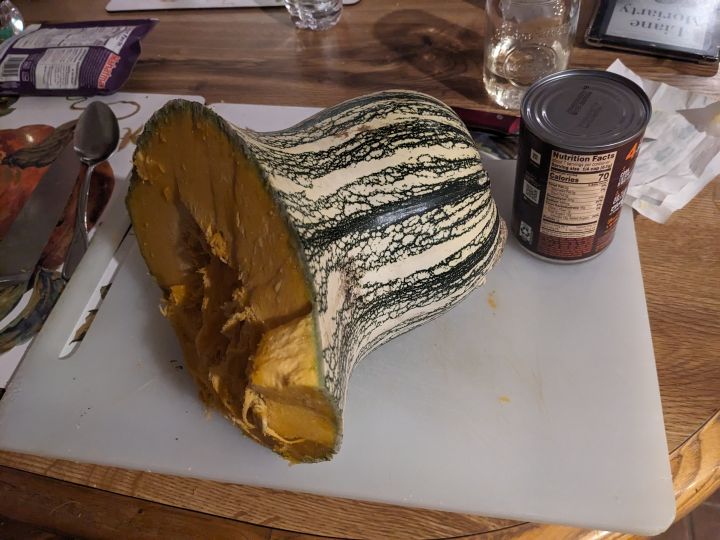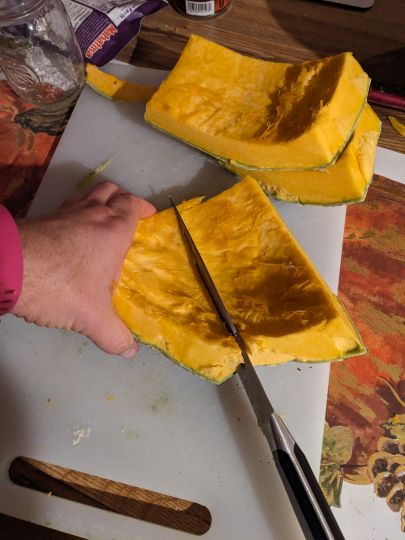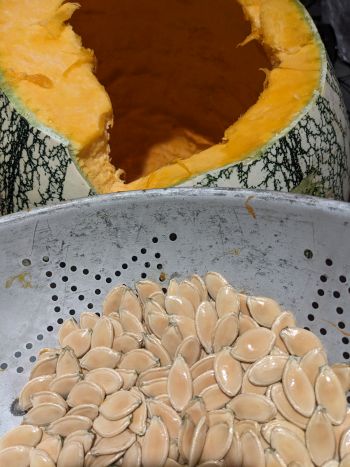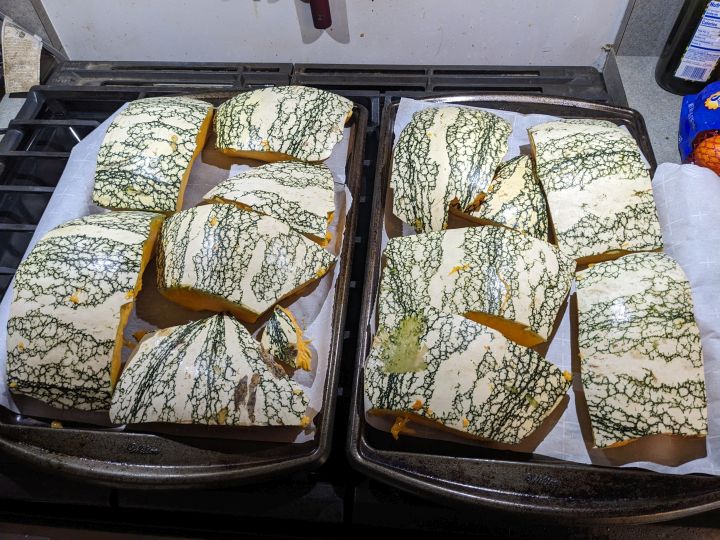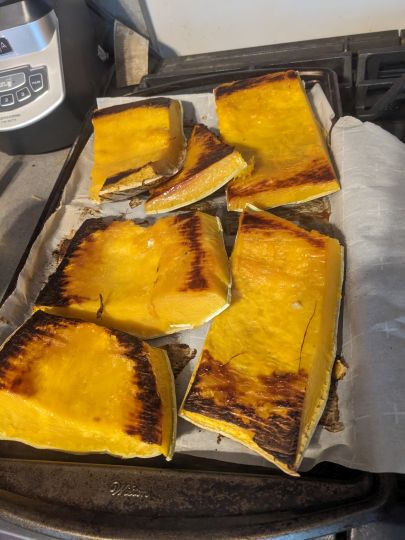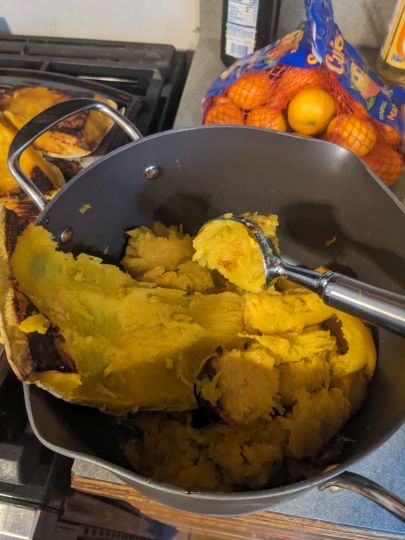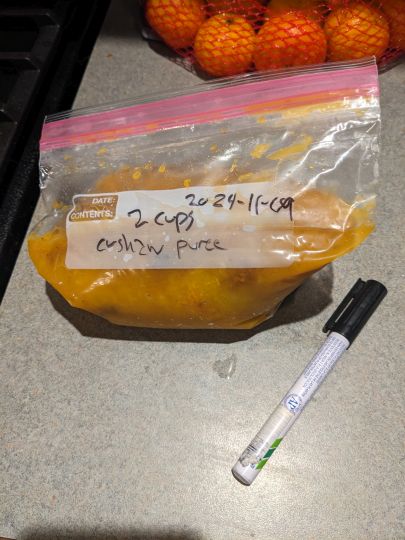Roasted Cushaw Puree
Cushaw puree can be prepared using several methods. Oven-roasting the squash may be the simplest.
For a large winter squash fruit, a cook might store the fruit for a few months whole at room temperature. Then when the squash is first needed, the cook might prepare half of it, and freeze the other half either raw or as puree.
Squash can be frozen either as clean raw fruit or as cooked puree.
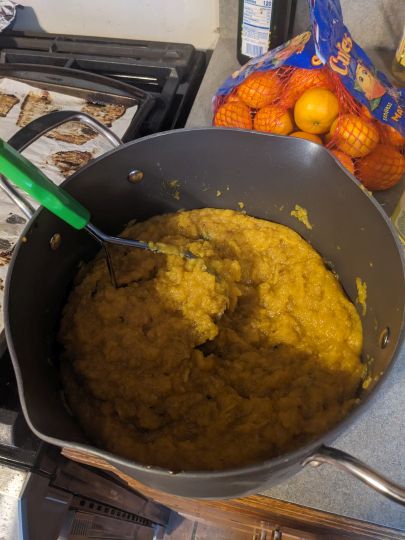
Ingredients
- 1 or more squash fruit
- Vegetable oil
- Salt
Equipment and supplies
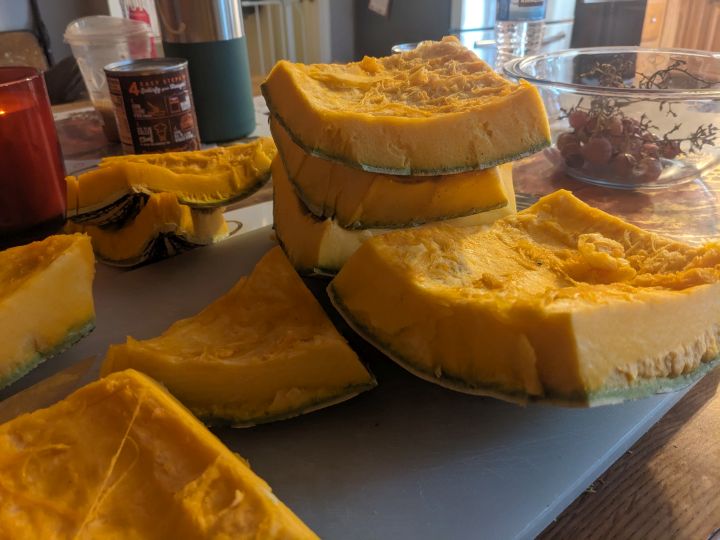
- Oven
- One or more baking trays or casseroles
- Parchment paper or aluminum foil
- Scoop or large spoon
- Large mixing bowl
- Potato masher or something similar
- Colander
Instructions
-
Preheat the oven to 400 degrees Fahrenheit
-
Cut the squash fruit into pieces that are relatively flat. The flesh in the neck is often thicker than the flesh around the seed cavity. Suggestion: You may consider splitting the neck in half, and roasting those two pieces in a separate tray so that they can be roasted longer than the other parts.
-
Line your baking trays, pans, casseroles, etc with parchment paper or aluminum foil.
-
Pour a small amount of vegetable oil and salt into a bowl. Either using a brush, a piece of parchment paper held in your hands, or any other method, coat the cushaw flesh in a light coating of oil and salt.
-
Place the cushaw pieces on the baking tray with the inside downward. For neck pieces, this means placing the “cut side” downward.
-
If all of your pieces are the same thickness, then you only need to set one timer. Squash which begin at room temperature with flesh up to 1.5 inches thick can be roasted in approximately one hour. Ticker flesh should be roasted for a longer period of time.
-
One the fruit cools sufficiently, use a large spoon or scoop to separate the roasted flesh from the rind. Use a potato masher, food processor, or similar approach to mix the flesh until it reaches puree consistency.
Because the rind of a hard shell squash fruit does not soften with roasting, be careful to avoid getting pieces of shell into the puree if yours has a hard shell.
Image gallery
